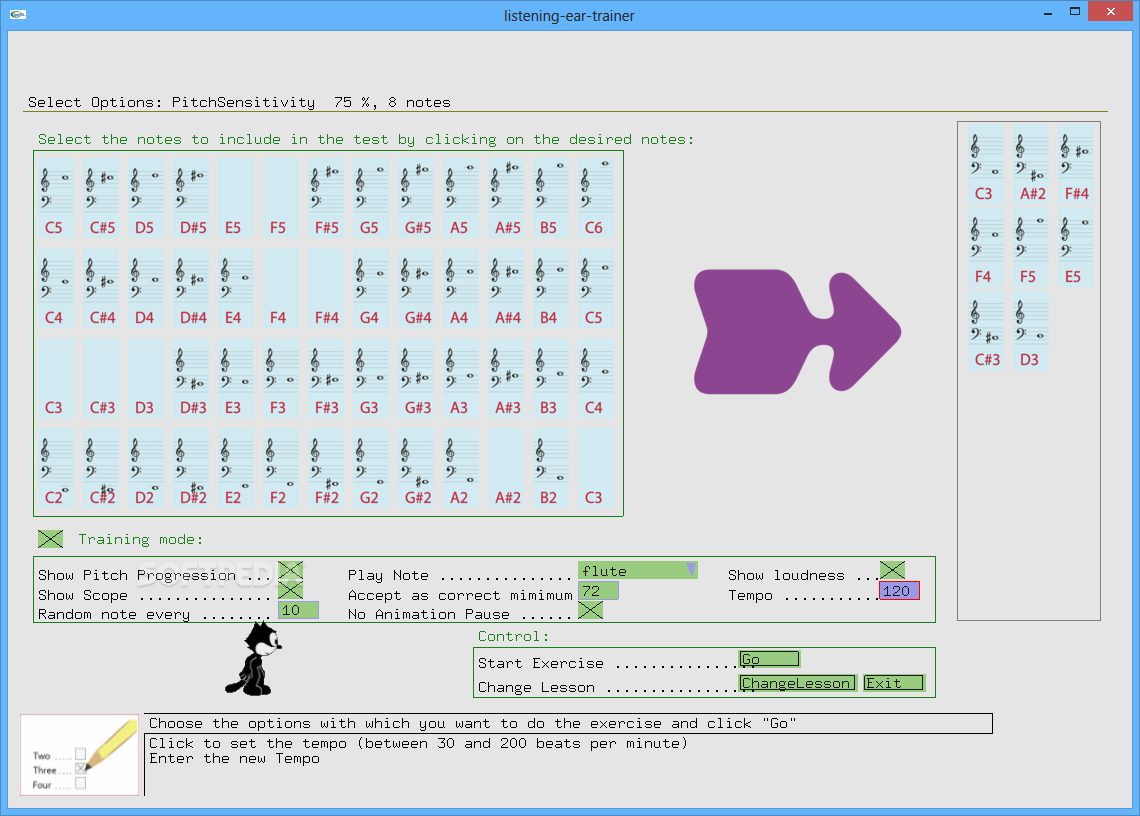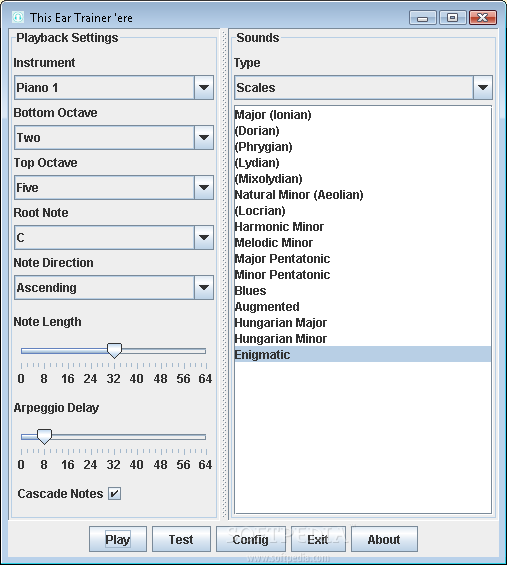

Singers both amateur and professional who want to incorporate (noteless) ear training exercises into their practice programme. All 12 major and minor triads above a root note (slash chords/hybrids)ĭepending on the setting, the chords can also be played arpeggiated. Four-note-chords with one tension (17 types) and with two tensions (15 types) Triads/four-note-chords in root position and inversion, as well as identification of top note positions


Passive exercises (identification practice) Chris MartinE3G5 Billie Joe ArmstrongA1A5 Jim MorrisonE2D5 Robert PlantE1G5 Justin BieberF2E5 Bruno MarsG2A5 Judy GarlandC3A5 John LegendC2E5. Scales sandbox: imitation practice in tonal spaces from over 40 different scales Justin Lane, a postdoctoral research associate at the center. Bass imitation exercises: double bass notes and root notes of various chords are to be reproduced vocally or on an instrument, a central skill that is often underdeveloped One of our own groups at the Center for Mind and Culture is training a different kind. Resolution game: technique for the improvement of downward interval singing or playing Atonal imitation: improvement of relative or referential hearing After some time doing Ear Training your ears will recognise the intervals and your fingers will just go there and youll find you can play what youve heard on a track fairly easily - there are other challenges involved of course, but Ear Training accelerates how quickly youll develop your transcribing skills 3. Diatonic imitation: reproduction of notes in a particular key, vocally or on an instrument In addition, the app uses a detailed educational guidance system, which allows users to individually customize the exercises.
#JUSTIN EAR TRAINER GENERATOR GENERATOR#
Unlike other apps, this one uses an integrated voicing generator to ensure that the chords played (position, voicing) correspond to the actual performance situation. One of the features that make our app so special is the fact that its microphone enables a sort of dialogue between the app and the musician – whether on voice, brass and reed instruments, guitar, piano or electric bass. Active hearing means reproducing what you have heard on an instrument or with your voice, while passive hearing refers to the ability to identify such things as the scales, triads and four-note-chords, tensions and slash chords, on which active hearing is based. The app offers a host of ear-training exercises, many of them quite enjoyable, all designed to enhance both active and passive hearing. Interval Ear Trainer: Every musician should work on Ear Training (or Aural Training) and Interval Ear Training is a very important element of ear training. It was developed by Swiss IT specialist and jazz trumpeter Daniel Schenker, professor at ZHdK, in collaboration with his son Elia. Although this app began as an ear-training tool for students of jazz and pop at the Zurich University of the Arts (ZHdK), it is also intended for musicians playing in other styles, and at all levels. Playing jazz, pop and improvised music means being able to quickly recognize and replay what you hear. Yet another ear-training app? Well, this one is different!


 0 kommentar(er)
0 kommentar(er)
